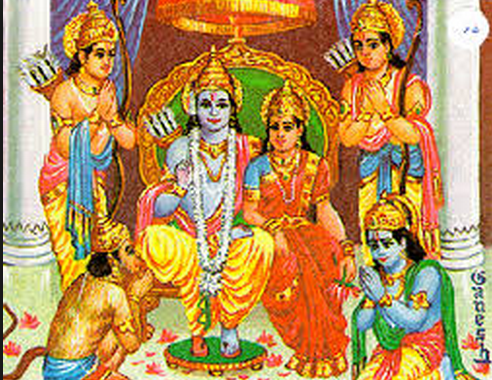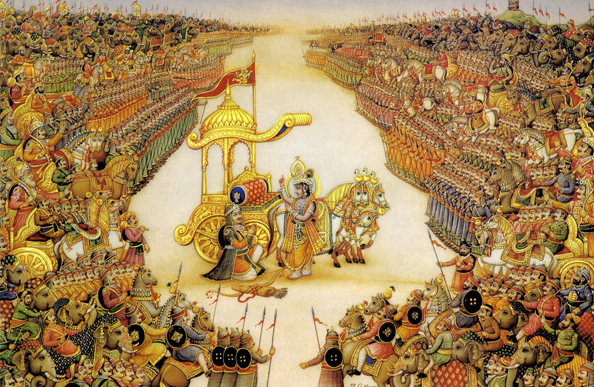India is a blend of diverse cultures and re religions that have continuously influenced Its mythology. Indian Mythology dates back to as early as 1200 B.C. when the first hymns of the RIG VEDA was composed. The hymns of the RIG VEDA are the first and freshest expression of the sense of beauty and gladness awakened in the Aryan race by the charms and the bounty of nature. What began as a celebration of natural elements such as Air, Water and Fire was converted into the worship of cosmic elements. And thus formed the triad of the early Vedic Gods – AGNI, VAYU and SURYA. The VEDIC Gods were mere abstractions, intangible and illusive personifications of the powers of nature. It is in the post-VEDIC phase or in the PURANAS that the gods assumed substantial shape and Individual character. The Vedic Age is when Hinduism actually began.
A common part of Indian mythology -Wars between the Asura (demon) and the Oevas (Gods) were often fought. The Asuras wanted to conquer the territory of the Devas. Many interesting stories are woven around this theme. The classical period also gave birth two of the most amazing Epics in the history of the world – the Ramayana and the Mahaphratha.
From 500 Bc to about 100 AD, the age of Buddhism and Jainism put Hinduism in decline. Buddha’s doctrine took India by storm. Hinduism, however, was able to survive the storm by renewing itself. Sacrifice went out of favour and the influence of Jainism and Buddhism led to the composition of the Upanishads. It was also the during the time that Vishnu and shiva completed their eclipse of India and the other epic gods.
Known to Hindus as ‘ithihasa’ (Sanskrit: thus verily happedned) refers collectively to the more epic Hindu scriptures, detailing the actions of divine incarnations onearth while interspersing them with often large sections of philosophical and ethical discourse. They are often classified as v ‘Hindu’ or ‘indian’ mythology. Though the the label does not capture the centrality of religious and spiritual affiliations of the texts that ring true TODAY. The most important of these are the Ramayana and the Mahapharatha. The bhagavad gita is also a part of it.
The Ramayana

The Ramayana is the part of hindu smriti, written by valmiki in 250 BC. This epic of 24,000 verses tells of Raghuvamsha prince, rama of Ayodhya, whose wife Sita is abducted by the rakshasa, , or demon, Ravana. The Ramayan had an importan role on later samskrit poetry, primary through its establishment of the sloka meter.
The Ramayana contails seven chapters, or kandas as well as voluminous group of works known as the puranas . the puranas are the part of Hindu smriti. These religious scriptures discuss devotion and mythology. Perhaps, the best known Purana is the Bhagavtha purana.
The Mahabharata

The Mahabharata has existed in various form for well over two thousand years. It came to exist, in numerous literacy and popular transformations in many of the non Sanskrit vernacular language of India and southern Asia. The inner most narrative kernel of the mahaphratha tells the stories of two sets of paternal first cousins-the five sons of deceased king pandu, and the one hundred sons of the blind king Dhritarashtra. Who became bitter rivels, and opposed each other in war for possession of the ancestral Bharata Kingdom. What is dramatically interesting within this simple opposition is the large number of individual agendas the many characters pursue, and the numerous personal conflicts, ethical puzzles. Subplots, and plot twists that give the story a strikingly powerful development.
The Bhgavad Gita
TheBhagavad gita is universally renowned as the jewel of India’s spiritual wisdom. Spoken b ord Krishna, to his disciple Arjuna, the gita’s seven hundred concise verses provide a definitive guide to the science of self-realization, the gita reveals, in a lucid and profound way, the nature of consciousness, the self, the universe and supreme. It is considered by most Hindus to be the single most represetives sacred text of the faith.






